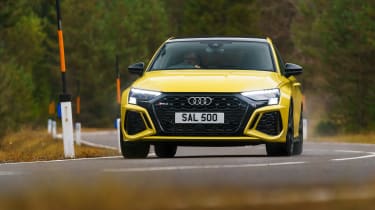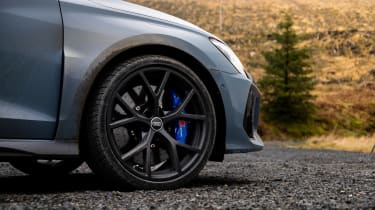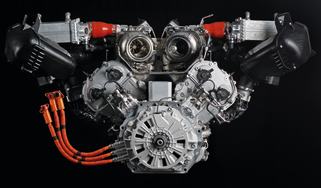Audi RS3 review – engine, gearbox and technical specs
Audi’s trademark five-cylinder offers no more power than before, but there are big chassis upgrades

There’s the distinctive burble from the motor, a sound you’re unlikely to tire of that marks the Audi RS3 out from all of its rivals. Some work to the engine mapping has released an additional 15lb ft, but power remains unchanged at 394bhp, although it arrives earlier in the rev range and hangs around for longer. So even in a car weighing 60kg more than its predecessors (1570kg) it has plenty of go for a road car.
It’s not the most responsive of engines, but once up and running it doesn’t hang about as it chews through its short ratios to help produce the headline performance figures.
On the subject of the gearbox, the seven-speed dual-clutch unit is the RS3’s weakest link. If you’re changing gear yourself the shifts, both up and down, are too slow – especially the latter when slowing from high speeds for a tight turn and you want to lose two or more ratios as quickly as possible.
It’s also easy to knick the limiter, and because it’s aggressive, even if you’ve selected another gear the split second before the ignition cuts, you’re left waiting before you’re off again. On track, it’s a long enough delay for the car ahead to pull a couple of car lengths on you.
More reviews
The rest, well that’s a very different story. There’s a skunkworks feel about this latest Audi Sport product, almost as if the engineers have been left alone to build an RS3 they’ve always wanted and they knew was possible. So out go the standard springs and dampers that have never managed to control the body, nor been able to deal with any kind of compression save for sending the car crashing from one side of the road to another. Instead there’s a chassis tuned for the road, while still polished for the track.
There is nothing revolutionary going on at each corner when it comes to the car’s chassis, but the small changes result in some pretty big results. Springs and anti-roll bars are stiffer and the dampers feature a new valve system to improve sensitivity, rebound and compression characteristics quicker than before.
There’s up to one degree of additional negative camber (half a degree on the rear) above a regular A3, requiring a stiffer subframe and bearings. The four-point multi-link rear suspension also includes stiffer wheel carriers. Opt for the optional RS Dynamic pack and the suspension can be tweaked further still in terms of more specific damper settings. And all RS3s sit 10mm lower than an S3, and 25mm lower than an A3.





